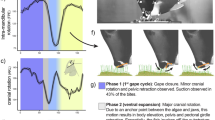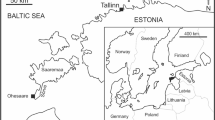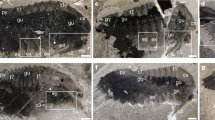Abstract
THE Pygocaulian Brachiopod Neothyris lenticularis possesses sets of ciliated filaments similar to those in other invertebrate filter feeders. Studies on this form, however, have shown that the method of feeding is very different from that in other ciliary feeders—Lamellibranchs1, certain sedentary Gastropods2, Cryptocephalous Polychætes3, Tunicates and Amphioxus4, Entoproct and Ectoproct Polyzoa5,6 and Crania7. There are two fundamental points of difference, namely, the function of the filaments and the direction of beat of the cilia on the filaments.
This is a preview of subscription content, access via your institution
Access options
Subscribe to this journal
Receive 51 print issues and online access
$199.00 per year
only $3.90 per issue
Buy this article
- Purchase on Springer Link
- Instant access to full article PDF
Prices may be subject to local taxes which are calculated during checkout
Similar content being viewed by others
References
Yonge, C. M., Phil. Trans. Roy. Soc., B, 230, No. 556 (1939).
Yonge, C. M., J. Mar. Biol. Assoc., 22 (1938).
Nicol, E. A. T., Trans. Roy. Soc. Edin., 56, Pt. 3 (1930).
Orton, J. H., J. Mar. Biol. Assoc., 10 (1913).
Atkins, D., Quart. J. Micro. Sci., 75, No. 299 (1933).
Borg, F., Zool. Bidrag. Uppsala, 10 (1926).
Orton, J. H., J. Mar. Biol. Assoc., 10 (1914).
Author information
Authors and Affiliations
Rights and permissions
About this article
Cite this article
RICHARDS, J. A New Method of Ciliary Feeding in the Brachiopod Neothyris lenticularis. Nature 164, 367–368 (1949). https://doi.org/10.1038/164367b0
Issue Date:
DOI: https://doi.org/10.1038/164367b0
This article is cited by
-
Ciliary Feeding Mechanisms of Brachiopods
Nature (1956)
Comments
By submitting a comment you agree to abide by our Terms and Community Guidelines. If you find something abusive or that does not comply with our terms or guidelines please flag it as inappropriate.



